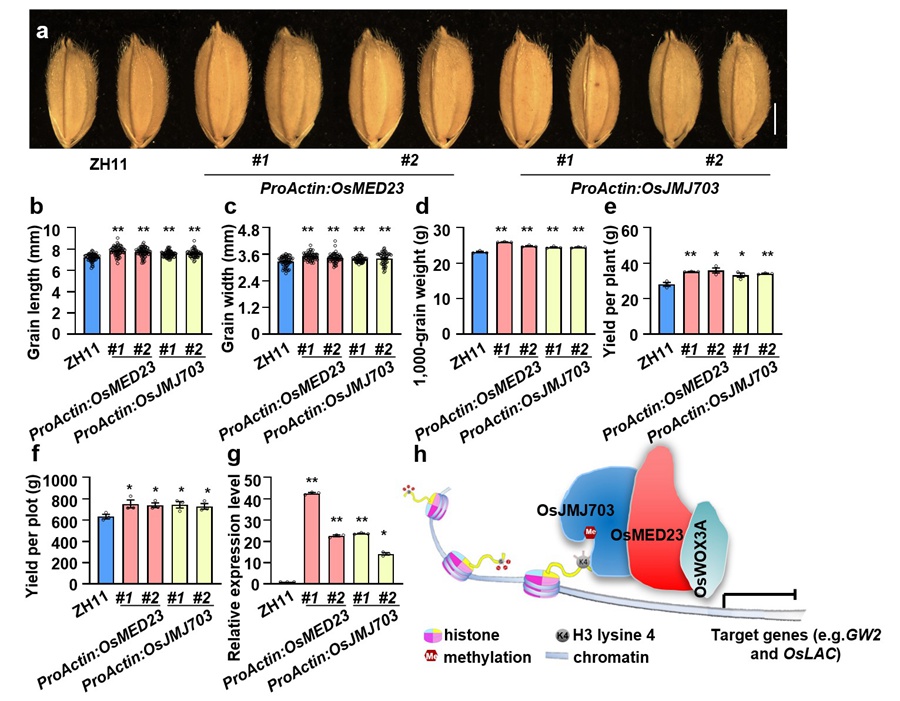China
March 24, 2025
A research team led by Dr. LI Yunhai from the Institute of Genetics and Developmental Biology of the Chinese Academy of Sciences (CAS) has uncovered a novel genetic mechanism that controls grain size and yield in rice, offering promising strategies to enhance global food production.
The study, published in PNAS, was a collaboration between CAS and Hainan University. It reveals how three critical components—OsMED23, OsJMJ703, and OsWOX3A—work together to influence rice grain development.
The Genetic Trio Behind Bigger Grains
Grain size is a critical factor influencing crop yield, yet the molecular pathways regulating it remain poorly understood. The researchers discovered that OsMED23, a component of the cellular "Mediator" complex that helps regulate gene activity, partners with a histone demethylase (OsJMJ703) and a transcription factor (OsWOX3A) to form a molecular trio. These three components act as a repressor, reducing the activity of two important genes, GW2 and OsLAC, that limit grain growth. By lowering levels of a specific epigenetic marker (H3K4me3) at these genes, the trio effectively silences them, allowing for larger, heavier grains.
From Laboratory Findings to Real-World Application
Experiments showed that disabling OsMED23 or OsJMJ703 led to smaller and lighter grains, while overexpressing these genes produced the opposite effect—plumper, heavier grains. Field trials confirmed the practical impact: rice plants with extra OsMED23 or OsJMJ703 delivered significantly higher yields compared to conventional varieties. This highlights the trio's potential as a genetic lever for crop improvement.
A New Frontier for Crop Engineering
This discovery offers a deeper understanding of how epigenetic regulation and transcription factors work together to shape grain traits. Unlike previous studies focusing on individual genes, this work reveals a coordinated network, offering multiple targets for precision breeding.
Implications Beyond Rice
While the study focused on rice, the mechanism could have broader implications for other staple crops such as wheat and maize, which share similar genetic components. The findings also highlight the potential of epigenetic editing—modifying chemical markers on DNA—to fine-tune crop traits, potentially revolutionizing agricultural practices.
A Step Toward Sustainable Farming
In summary, this study not only solves a long-standing puzzle in plant biology but also opens doors to smarter and sustainable farming. By harnessing the power of OsMED23, OsJMJ703 and OsWOX3A, researchers are one step closer to breeding crops that feed more people with fewer resources.

The Mediator subunit OsJMJ703-OsMED23-OsWOX3A controls grain size and yield in rice. (Image by IGDB)